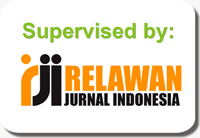Pengukuran Nilai Grounding Terbaik Pada Kondisi Tanah Berbeda
DOI:
https://doi.org/10.31961/eltikom.v5i1.251Keywords:
Earth Resistance Tester, Grounding, SoilAbstract
A good grounding or grounding system is a mechanism to protect electronic devices. This protection can be direct or indirect during lightning strikes in rainy seasons. The characteristic and condition of the soil is one of the factors that can affect the grounding value. In this research, the measurement of grounding value is conducted in different soil conditions. The conditions are the watery, clay, dry, rocky, sand and swamp soils. This research purpose is to determine the value of grounding or grounding resistance in different type of soils. The measurement methods use three point method and four electrode method by sticking the electrodes into the ground. The value of the grounding resistance displayed on the measuring instrument (Earth Resistance Tester) would be smaller if the electrodes are planted deeper with the addition of electrode rods, and the distance between the electrodes is set between 5 to 10 meters.
Downloads
References
R. F. Christianti, A. H. Saptadi, and M. Eng, “Panduan Praktikum Pengukuran Besaran Elektrik,” Purwokerto, 2019.
F. A. Zahra, “Analisis Sistem Penangkal Petir pada BTS (base transceiver station) (suatu studi pada BTS X - Ciampea Dramaga Bo-gor),” Universitas Negeri Jakarta, 2015.
D. Darwanto, Sistem Proteksi Petir dan Sistem Penangkal Petir. PT.Tritech Consult, 1995.
Sudaryanto., “Analisis Perbandingan Nilai Tahanan Pembumian Pada Tanah Basah, Tanah Berpasir dan Tanah Ladang,” J. Electr. Technol., vol. 1, no. 1, p. 1, 2016.
I. Gunawan, Dasar Perencanaan Instalasi Penangkal Petir. Jakarta: Jurusan Elektro FTUI, 2003.
Z. Lubis, S. Aryza, and S. Annisa, “Metode Terbaru Perancangan Proteksi Petir Eksternal Pada Pembangkit Listrik,” J. Electr. Technol., vol. 1099, pp. 26–34, 2019.
M. Saini, A. M. S. Yunus, and A. Pangkung, “Pengembangan Sistem Penangkal Petir dan Pentanahan Elektroda Rod dan Plat,” INTEK J. Penelit., vol. 3, no. 2, p. 66, 2016.
A. Ponadi, “Analisis perbandingan nilai tahanan pentanahan menggunakan elektroda batang ( rod) jenis crom tembaga, allumunium, besi, degan media tanah pasir lumpur dan tanah liat,” J. Ilm. Mustek Anim, vol. 3, no. 2, pp. 166–185, 2014.
N. Yuniarti, “Evaluasi Sistem Penangkal Petir Eksternal Di Gedung Rektorat Universitas Negeri Yogyakarta,” Eval. Sist. Penangkal Petir Eksternal Di Gedung Rektorat Univ. Negeri Yogyakarta, vol. 1, no. 2, pp. 187–195, 2017.
Z. Abidin, “Karakteristik Batang Pentanahan Sistem Arang-Garam (Sigarang) Sebagai Upaya Perbaikan Sistem Pentanahan,” J. ECOTIPE, vol. 4, no. 1, pp. 12–16, 2017.
T. J. Tanah, P. Dan, A. I. R. Laut, D. I. Pulau, A. Dengan, and V. Salamena, “Pengaruh Kedalaman Elektroda Terhadap Pengukuran Tahanan Jenis Tanah Pasir dan Air Laut dipulau ambon dengan konfigurasi Wenner Alfa,” SIMETRIK, vol. 8, no. 1, pp. 93–100, 2018.
E. Yuniarti, D. Hermanto, and P. Ahmadi, “Penggunaan Gypsum dan Magnesium Sulfat sebagai upaya menurunkan Nilai Resistansi Pentanahan,” Surya Energy, vol. 2, no. 1, pp. 140–148, 2017.
A. Syakur, Abdul, Juningtyastuti, Dermawan, “Comparative Analysis of Grounding Resistance Value in Solid and Septictank,” Teknik, no. 1, pp. 6–8, 2008.
IEEE Power and Energy Society, IEEE Guide for Measuring Earth Resistivity, Ground Impedance, and Earth Surface Potentials of a Grounding System - Redline, vol. 2012, no. December. 2012.
A. Solichan and R. Haryanto, “Analisa Impedansi Pengetanahan Elektroda Batang Tunggal Dalam Beton Rangka Baja Terhadap Injeksi Arus Bolak Balik,” Media Elektr. - Unimus, vol. 3, no. 1, 2010.
Downloads
Published
How to Cite
Issue
Section
License
- Authors retain copyright and grant the journal right of first publication with the work simultaneously licensed under a Creative Commons Attribution License that allows others to share the work with an acknowledgement of the work’s authorship and initial publication in this journal.
- Authors are able to enter into separate, additional contractual arrangements for the non-exclusive distribution of the journal’s published version of the work (e.g., post it to an institutional repository or publish it in a book), with an acknowledgement of its initial publication in this journal.
- Authors are permitted and encouraged to post their work online (e.g., in institutional repositories or on their website) prior to and during the submission process, as it can lead to productive exchanges, as well as earlier and greater citation of published work.




